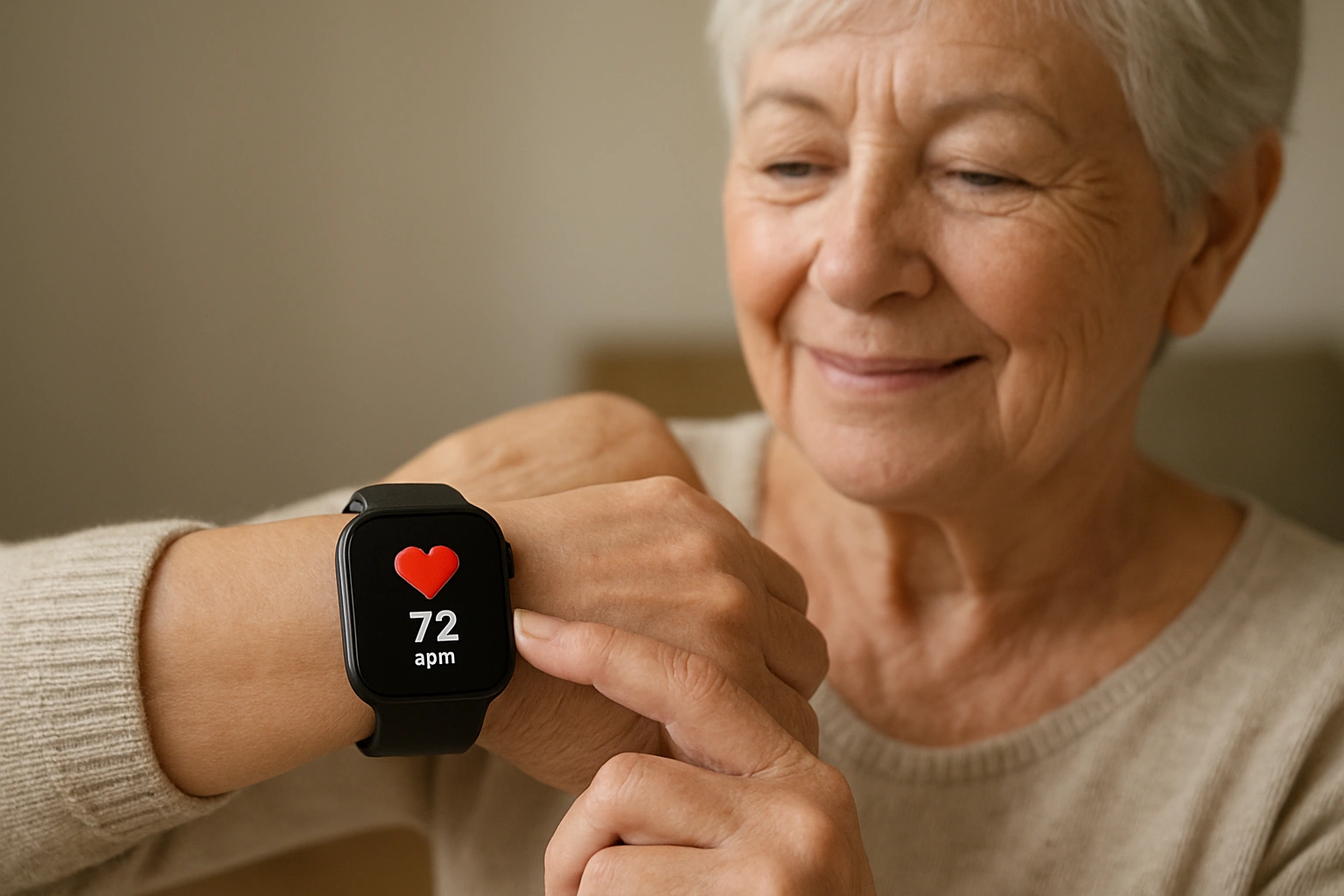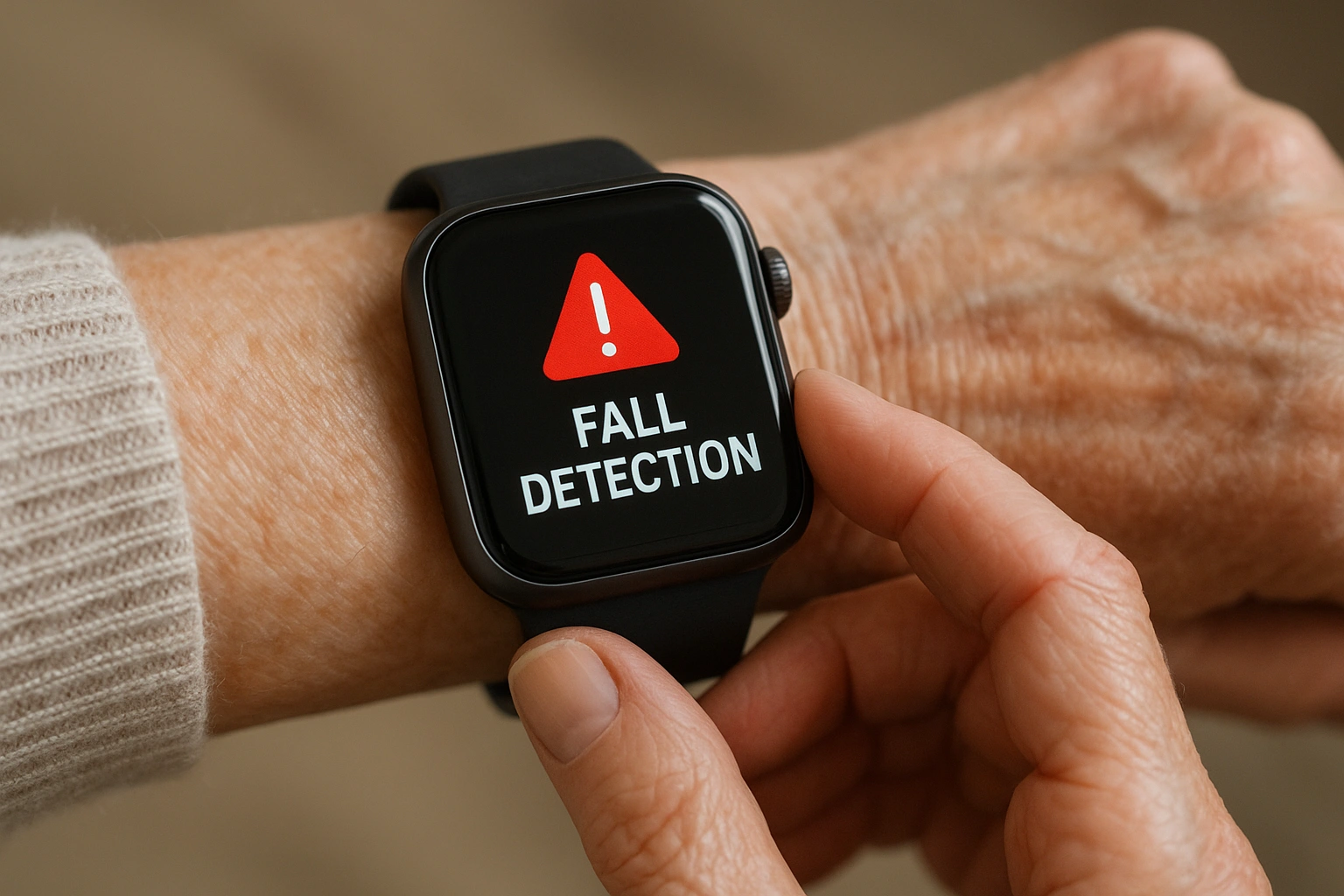
You can’t be there 24/7, but the worry for your aging parent often is. Health monitoring devices seniors can help track medication adherence, vital signs, and overall well-being, easing that constant anxiety. With health monitoring devices seniors in place, you gain timely alerts about blood pressure, heart rate, or sudden changes, providing reassurance even from afar. These health monitoring devices seniors act as a vigilant partner, giving families peace of mind while supporting seniors’ independence. By integrating health monitoring devices seniors thoughtfully, you create a reliable safety net that keeps both you and your loved one informed and secure.
This is the power of modern remote health monitoring. Health monitoring devices seniors are no longer just gadgets; they are sophisticated tools for proactive wellness, fall detection, and emergency response. This guide highlights the best health monitoring devices seniors can rely on in 2025, combining wearables, smart sensors, and other innovative tools. By exploring these health monitoring devices seniors, families gain practical insights to support independence while ensuring safety. Using health monitoring devices seniors strategically allows you to create a healthier, more secure environment for your loved one.
What Are Senior Health Monitoring Devices Seniors?
These are a category of electronic tools created specifically as health monitoring devices seniors, designed to track, record, and sometimes transmit essential health and safety data for older adults. Health monitoring devices seniors include wearables like smartwatches that monitor vitals on the go, as well as in-home devices such as smart blood pressure cuffs and automated pill dispensers. The primary goal of these health monitoring devices seniors is to shift care from a reactive approach—only seeing a doctor when something goes wrong—to a proactive model that identifies potential health issues through daily data trends. By using health monitoring devices seniors effectively, families can ensure seniors stay safer, healthier, and more independent.
The growth in this sector is explosive. A recent market analysis reported by Statista projects the wearable technology market to continue its rapid expansion, with a significant focus on health applications. For seniors, this trend means more sophisticated, user-friendly, and affordable tools are constantly becoming available, making remote care more effective than ever.
Why This Technology is a Must-Have for Modern Elderly Care
Adopting these tools is no longer a niche choice for the tech-savvy; it’s becoming a standard part of a comprehensive care plan. The benefits are profound.
Early Detection of Serious Health Issues
Many serious conditions, like atrial fibrillation (AFib) or hypertension, can be silent. A smartwatch with an ECG feature or a smart blood pressure cuff can detect irregularities that might otherwise go unnoticed until a major health event, like a stroke, occurs. This early warning can be life-saving.
Empowering Seniors with Health Insights
These devices give seniors a tangible connection to their own health. Seeing how a daily walk positively impacts their heart rate or sleep score can be incredibly motivating. It empowers them to become active participants in their own wellness journey.
Providing Actionable Data for Doctors
A doctor’s appointment provides only a single snapshot of a patient’s health. A device that has been tracking blood pressure or heart rhythms for weeks provides a rich dataset, allowing a physician to see trends and make more informed treatment decisions. This is a core part of the digital health revolution, a topic often explored on sites like peternakan.web.id.
Key Types of Health Monitoring Devices for Seniors
Let’s break down the most important categories of health monitoring devices seniors to consider for your loved one’s care plan. These health monitoring devices seniors help track vital signs, detect emergencies, and maintain overall wellness. By understanding the features of different health monitoring devices seniors, you can choose the right tools to support safety and independence. Exploring health monitoring devices seniors ensures that both you and your loved one feel confident in daily care routines.

1. Wearable Health and Safety Monitors
This is the most dynamic category, dominated by smartwatches (like Apple Watch) and dedicated PERS devices (like Medical Guardian). Key features to look for are automatic fall detection, GPS location, heart rate monitoring, and increasingly, ECG and blood oxygen sensors.
2. Smart Blood Pressure Monitors
For anyone with hypertension, these devices (from brands like Withings or Omron) are essential. They make taking and recording blood pressure effortless. The readings sync automatically to an app, creating a long-term log that can be easily emailed to a doctor.
3. Personal ECG Devices
Portable, FDA-cleared devices like the KardiaMobile allow users to take a medical-grade ECG in 30 seconds, anytime, anywhere. This is a game-changer for detecting intermittent arrhythmias like AFib that may not appear during a doctor’s visit.
Proactive Care in Action: A Real-Life Scenario
John bought his 78-year-old father, David, an Apple Watch. David enjoyed tracking his walks, but one evening, he felt a slight flutter in his chest. He used the watch’s ECG feature, which showed a warning for atrial fibrillation. He sent the reading to his son, who immediately forwarded it to the cardiologist. The doctor, seeing the clear data, was able to get David on medication quickly, significantly reducing his stroke risk. This story perfectly illustrates how health monitoring devices for seniors can turn a vague symptom into actionable, life-saving data.
Comparing Top Health Monitoring Devices
Here’s a head-to-head look at some of the best-in-class devices for 2025.
| Device | Primary Use Case | Pros | Cons |
|---|---|---|---|
| Apple Watch SE/Series 9 | All-in-One Health & Safety | Excellent fall detection, ECG, heart health notifications, very discreet. | Requires daily charging, needs an iPhone. |
| KardiaMobile by AliveCor | On-Demand ECG Monitoring | FDA-cleared, highly accurate, extremely portable, easy to share data. | Single-function; does not provide fall detection or emergency calls. |
| Withings BPM Connect | Smart Blood Pressure Monitoring | Clinically validated, very easy to use, syncs via Wi-Fi (no phone needed nearby). | Only measures blood pressure and heart rate. |
| Medical Guardian MGMove | Dedicated Emergency Response | Reliable 24/7 monitoring service, great battery life, simple interface. | Requires a monthly subscription; fewer health metrics than a full smartwatch. |
Common Mistakes to Avoid When Choosing a Device
To ensure your investment is effective, steer clear of these common pitfalls.
- Choosing a Device That’s Too Complicated: The most feature-rich device is worthless if it’s too difficult for your loved one to use. Prioritize a simple, intuitive user interface above all else.
- Ignoring Battery Life: A device that needs to be charged every day can be easily forgotten. For critical functions like fall detection, look for devices with multi-day battery life.
- Forgetting About Monthly Fees: Many PERS devices and health monitoring services come with a monthly subscription. Factor this recurring cost into your budget.
- Not Setting It Up Properly: Take the time to fully set up all the features, including inputting emergency contacts and enabling caregiver notifications, to get the maximum benefit.
Expert Tips & Best Practices
Use these insider strategies from the world of senior care tech.

- Consult with Their Doctor First: “Before you buy, talk to your loved one’s primary care physician,” advises Dr. Anya Sharma, a geriatrician. “The doctor can help you prioritize which vital signs are most important to track based on their specific health conditions.”
- Look for FDA Clearance: For devices that measure clinical data like ECG or blood pressure, look for the term “FDA-cleared.” This indicates the device has met a certain standard of accuracy and reliability.
- Practice Using It Together: Don’t just give the device as a gift. Practice using the key features—like making an emergency call or taking an ECG—together, so it feels familiar and not intimidating in a real situation.
- Understand the Data-Sharing Capabilities: Choose a device with an app that makes it easy to export or email health reports. The ability to share clean, long-term data is what makes these devices so valuable to medical professionals.
Frequently Asked Questions (FAQ)
Q: Are consumer health monitoring devices accurate enough for medical use?
A: While consumer devices are becoming increasingly accurate, they should not replace clinical, medical-grade equipment. Many devices, like those with FDA-cleared ECG features, are excellent for screening and tracking trends. However, all data and alerts should be discussed with a doctor, who will use their own calibrated equipment for official diagnoses and treatment plans.
Q: How do I convince my parent to use wearable health tech without making them feel old?
A: Focus on the empowerment and lifestyle aspects. Frame a smartwatch as a tool for tracking fitness goals, staying connected with calls and texts, and as a modern convenience. Highlight the safety features as a ‘just-in-case’ bonus that allows them to be more active and independent with confidence, rather than as a sign of frailty.
Q: Does Medicare cover these health monitoring devices?
A: Generally, Medicare does not cover consumer wearables like an Apple Watch. However, it may cover certain devices under specific circumstances. For example, some remote patient monitoring (RPM) services, prescribed by a doctor for chronic conditions, may be covered. PERS devices are also typically paid for out-of-pocket, though some Medicare Advantage plans may offer partial reimbursement.
Q: What is the difference between an ECG and a heart rate monitor?
A: A heart rate monitor measures how fast your heart is beating (beats per minute). An electrocardiogram (ECG or EKG) measures the heart’s electrical activity and can detect irregularities in its rhythm, such as atrial fibrillation (AFib). While related, an ECG provides much more detailed clinical information than a simple heart rate reading.
Q: Do these devices require a smartphone and a monthly subscription?
A: It varies. Most smartwatches and advanced wearables require a smartphone to set up and view detailed data. Many PERS devices, however, are standalone and do not require a smartphone but do require a monthly monitoring subscription. Some single-function devices, like smart blood pressure cuffs, can work independently but offer more features when paired with a phone.
Conclusion
The right piece of technology can be one of the most loving and practical gifts you can give to an aging parent—and to yourself. Health monitoring devices seniors are more than just gadgets; they help track vital signs, detect potential issues early, and give both the senior and family members reassurance. By using health monitoring devices seniors, you provide a safety net that supports independence and confidence in daily life. With thoughtfully selected health monitoring devices seniors, you create a modern, intelligent system that helps seniors age in place safely while maintaining dignity.
To stay informed on this rapidly evolving field, trusted sources like TechCrunch’s health section and Wired offer excellent coverage. The future of care is proactive, and it’s powered by technology.
Which type of health monitor do you think would be most beneficial for your loved one? Share your thoughts below!
